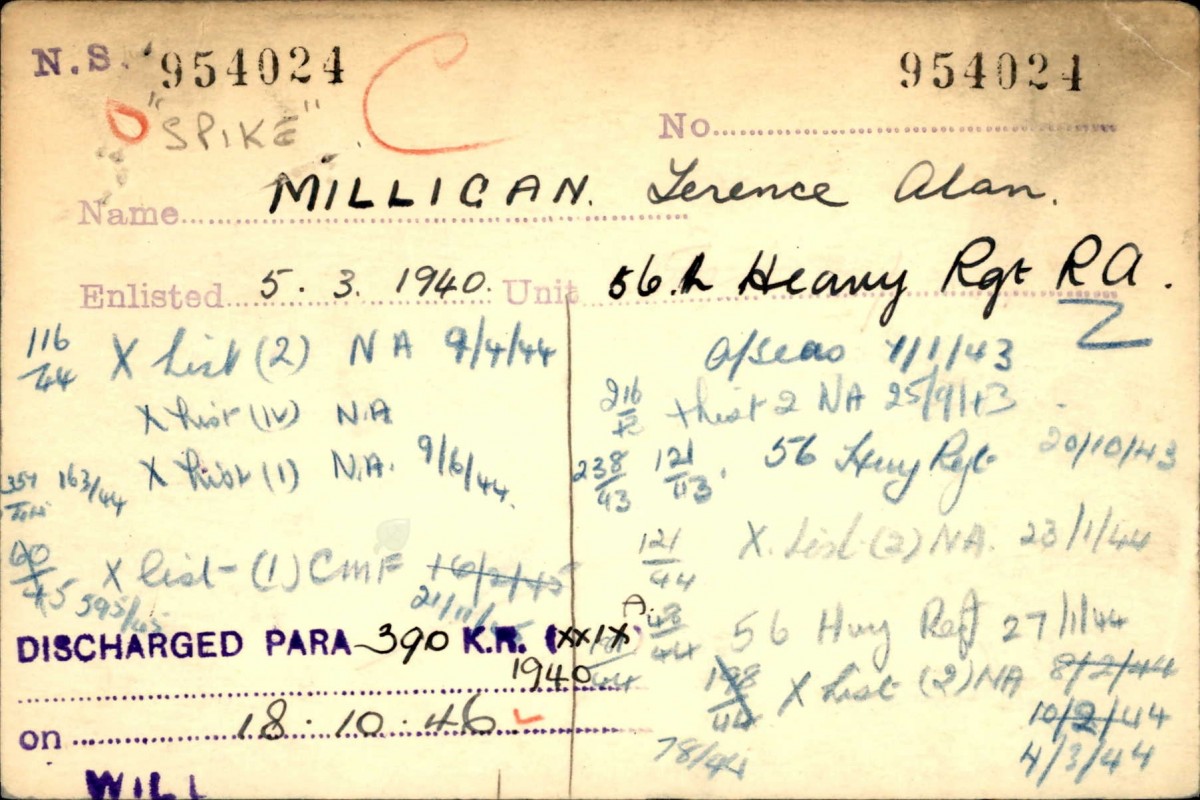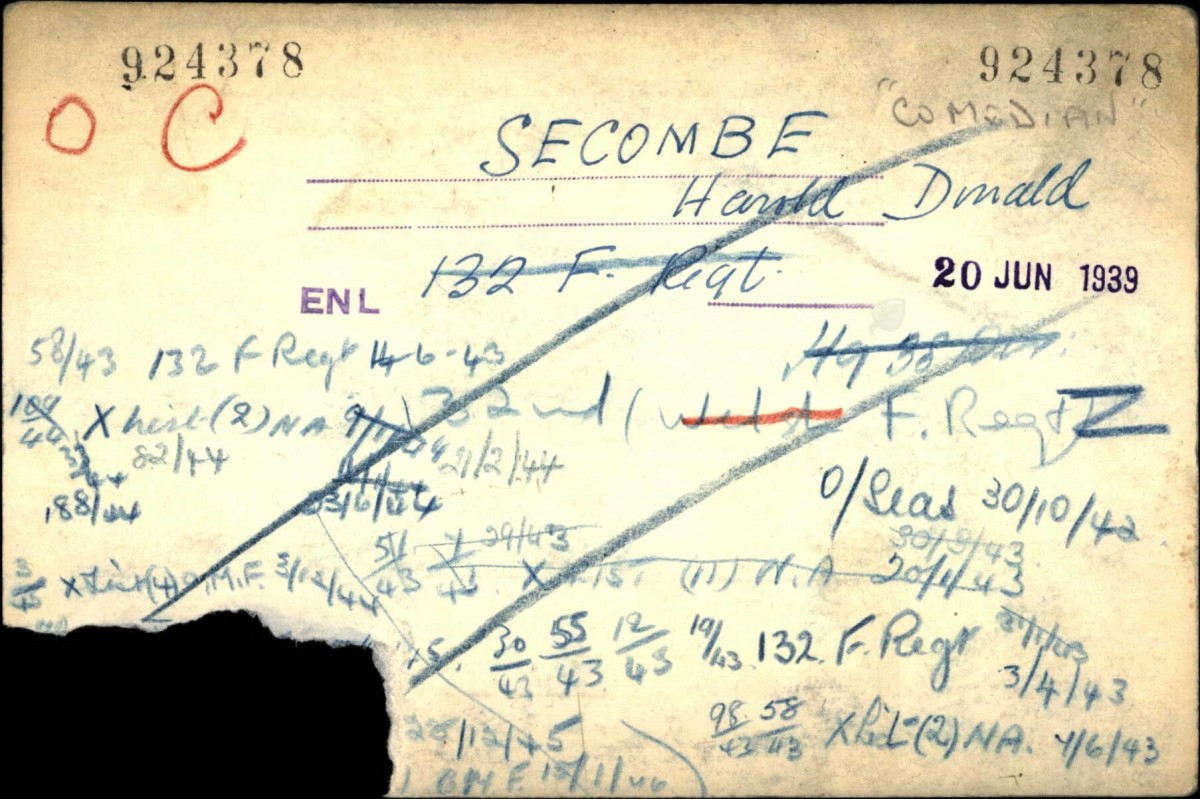To mark the 75th Anniversary of VE Day, we are delighted to announce the completion of a year-long project in partnership with Ancestry.com to publish an important WWII military and social history resource online for the first time.
During the conflict, up to three million people served in the British Army, with one million in the Royal Artillery across 960 regiments. Tracer Cards were created as a way of keeping track of the movements of serving soldiers. These small cards were like old-style library index cards and answered the question ‘where is that soldier right now?’ without the need to search through service records, saving a huge administrative burden.
Held in our archive in Larkhill, the Royal Artillery Tracer Cards have been photographed and indexed by Ancestry’s digitisation team and are now available to search online at www.ancestry.co.uk by name and service number. Unfortunately, unlike a soldier’s service record, they were not intended to be kept permanently and not all have survived. However, there are over 300,000 cards from non-commissioned officers and gunners providing a wealth of information about the individual and the regiments they served in.
Tracer Cards provide the name, date of enlistment and service number of an individual, but most usefully they state which regiment or battery they were posted to. When a soldier changed unit, their old regiment or battery was crossed out and the new one was written in. If you are lucky you can find a whole list of crossed out batteries and regiments, showing someone’s service history. Sometimes a soldier was temporarily unavailable for active duty and the Tracer Card shows that too using a series of ‘X List’ codes. For instance ‘X List (2)’ meant ‘admitted to hospital or evacuated on medical grounds beyond the Regimental Aid Post’.
When viewing a Tracer Card, you can clearly see that they were temporary records. They were updated by clerks trying to keep track of millions of soldiers serving in theatres of war across the globe. They include abbreviations, crossings out and even bad handwriting! When a clerk ran out of space on a card, it would be thrown away and a new one started. Despite that, they can be really useful for anyone investigating a WWII Gunner in their family.
Among the Tracer Cards in the Royal Artillery Collection are some recognisable names. Spike Milligan and Harry Secombe famously became friends when they served in the Royal Artillery in the Second World War. During the North African campaign, recoil made a 7.2-inch howitzer from Milligan’s battery roll off a cliff, under which Secombe was sitting in his small wireless truck. The huge artillery gun narrowly missed squashing Secombe flat and the next thing he saw was Milligan asking, “Anybody seen a gun?” to which Secombe brilliantly replied: “What colour was it?”
Commenting on the project Royal Artillery Museum Archivist Sian Mogridge said: “When people first embark on family history or historical research, they are often surprised by how little archive material has been digitised and made available online. It can be quite time consuming and expensive to copy delicate records.
"We are delighted that through our partnership with Ancestry.com our Royal Artillery WWII Tracer Cards are now publically available online and very fitting to be able to announce this great news in the week leading up to the 75th Anniversary of VE Day. These rich historical documents will provide a wealth of information for people wanting to know more about individual Gunners and their roles during World War II.”
Tracer Cards of Spike Milligan and Harry Secombe pictured below.


